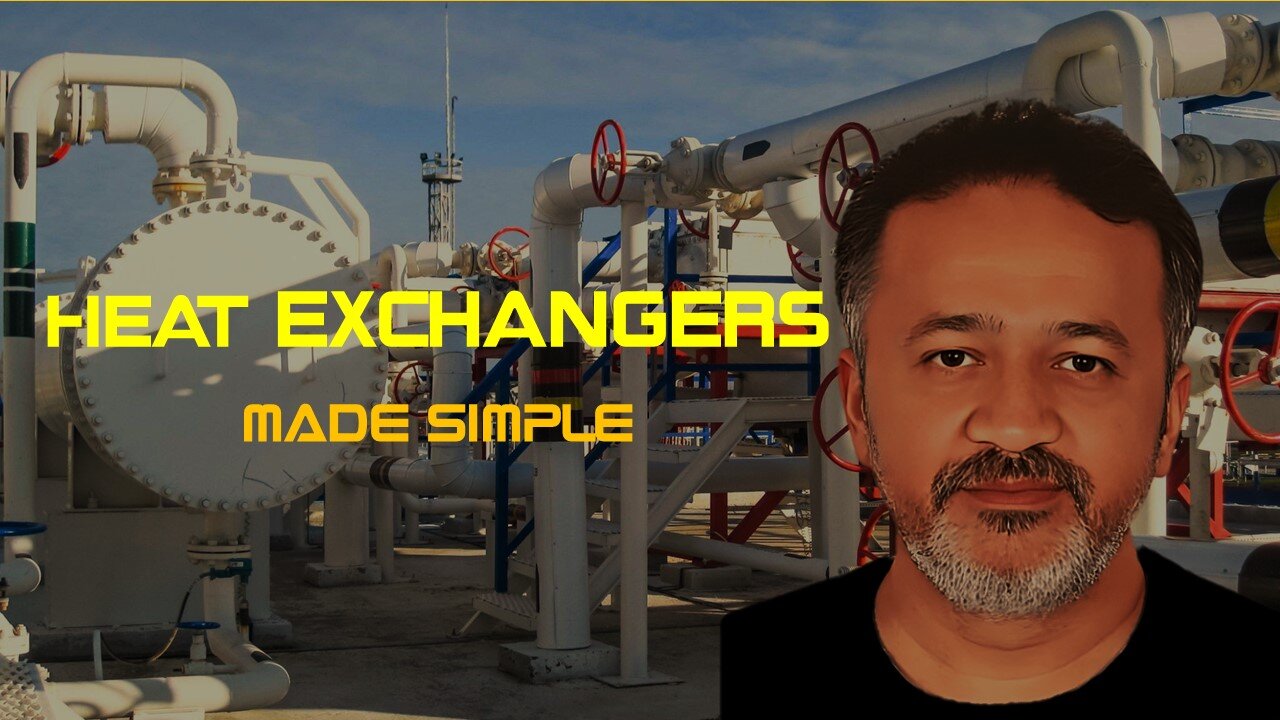Premium Only Content

Heat Exchangers Demystified: Essential Concepts and Designs |Mastering the Art of Heat Transfer
Heat exchangers are crucial devices used in various industries to efficiently transfer heat from one fluid or gas stream to another. They are designed to maximize the exchange of thermal energy while minimizing energy loss.
The primary purpose of a heat exchanger is to facilitate the transfer of heat between two mediums that are at different temperatures. This can involve either heating or cooling one of the fluids or achieving a temperature exchange without a significant change in either fluid's temperature.
Heat exchangers come in different types and designs, but the fundamental principle remains the same: the fluids flow in separate paths, allowing heat to transfer from one fluid to the other. Some common types of heat exchangers include:
Shell and Tube Heat Exchangers: This is the most common type of heat exchanger, consisting of a shell (a large outer vessel) and multiple tubes within it. One fluid flows through the tubes, while the other flows outside the tubes within the shell. Heat is transferred through the tube walls from one fluid to the other.
Plate Heat Exchangers: These heat exchangers consist of a series of plates with alternating flow channels. The fluids flow through these channels in a counterflow or parallel flow configuration, allowing for efficient heat transfer. Plate heat exchangers are compact, lightweight, and have high heat transfer coefficients.
Finned Tube Heat Exchangers: In this type, tubes are equipped with extended surfaces or fins to increase the heat transfer area. The fins enhance the heat transfer by improving surface contact and increasing the convective heat transfer coefficient. Finned tube heat exchangers are commonly used in air conditioning and refrigeration systems.
Air-to-Air Heat Exchangers: These heat exchangers transfer heat between two separate air streams, often used in HVAC systems. They are designed to recover heat from the exhaust air and transfer it to the incoming fresh air, improving energy efficiency.
Heat exchangers find extensive applications in industries such as HVAC, power generation, chemical processing, petroleum refining, food and beverage production, and more. They are crucial for processes like heat recovery, thermal management, waste heat utilization, and temperature control.
Efficient operation and maintenance of heat exchangers are essential to ensure optimal heat transfer and prevent fouling or scaling that can hinder performance. Regular inspections, cleaning, and repair are necessary to maintain their efficiency and extend their lifespan.
In summary, heat exchangers play a vital role in facilitating the exchange of heat between fluids or gases in a wide range of applications. They enable energy conservation, process optimization, and improved system performance by efficiently transferring thermal energy from one medium to another.
-
 UPCOMING
UPCOMING
2 MIKES LIVE
11 hours agoTHE MIKE SCHWARTZ SHOW with DR. MICHAEL J SCHWARTZ 01-16-2025
174 -
 43:10
43:10
PMG
10 hours agoHannah Faulkner and Jeff Younger | Father fights for his son!
284 -
 1:24:14
1:24:14
Game On!
14 hours ago $3.41 earnedTaylor Swift SHOCKS Chief fans! Does NOT want Travis Kelce to retire!
25.9K7 -
 4:27
4:27
Reforge Gaming
13 hours agoTHIS will not save Ubisoft.
42.4K6 -
 7:35
7:35
Tactical Advisor
1 day agoNEW Springfield Prodigy Compact (FIRST LOOK)
67.8K6 -
 16:45
16:45
IsaacButterfield
1 day ago $6.28 earnedWoke TikToks Are DESTROYING The World
37.1K31 -
 1:09:27
1:09:27
State of the Second Podcast
18 hours agoThis is Why We Don’t Trust Politicians (ft. @stones2ndsense)
31.2K4 -
 10:19
10:19
Chrissy Clark
14 hours agoCNN’s BILLION Dollar Defamation Trial
34.2K11 -
 1:00:27
1:00:27
Trumpet Daily
22 hours ago $6.26 earnedCongress Humiliates Itself - Trumpet Daily | Jan. 15, 2025
36.4K15 -
 1:49:46
1:49:46
Glenn Greenwald
1 day agoTrump Fosters A Peace Deal With Israel & Gaza; Trump's Pressure On Israel Embarrasses His Enemies & Provides Foreign Policy Clues; Rubio & Hegseth On War And Militarism | SYSTEM UPDATE #389
149K203